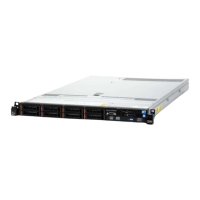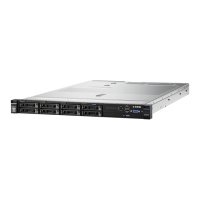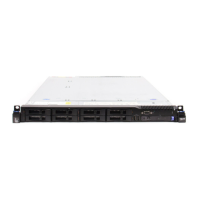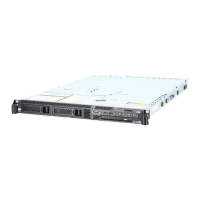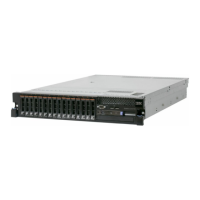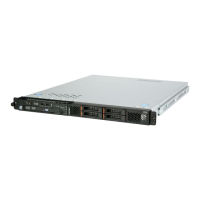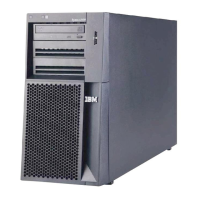IBM System x3550 M3 3
An optional Virtual Media Key enables additional systems management capabilities, including
web-based out-of-band remote control (keyboard video and mouse), remote optical drive support,
Windows “blue screen” error capture, and support for LDAP and SSL protocols.
Text Console Redirection support allows the administrator to remotely view x3550 M3 text messages
over Serial or LAN connections.
Integrated industry-standard Unified Extensible Firmware Interface (UEFI) next-generation BIOS.
New capabilities include:
Human readable event logs — no more beep codes.
Complete out-of-band coverage by the Advance Settings Utility to simplify remote setup.
A complete setup solution, allowing adapter configuration functions to be moved into UEFI.
Integrated Trusted Platform Module (TPM) 1.2 support.
Industry-standard AES NI support for faster, stronger encryption.
Integrated IPMI 2.0 support alerts IBM Systems Director to anomalous environmental factors, such as
voltage and thermal conditions. It also supports highly secure remote power control using data
encryption.
IBM Systems Director is included for proactive systems management. IBM Systems Director comes
with a portfolio of tools, including IBM Systems Director Active Energy Manager, IBM Service and
Support Manager, and others. IBM Systems Director also offers extended systems management tools
for additional server management and increased availability. When a problem is encountered, IBM
Systems Director can issue administrator alerts via email, pager, and other methods.
IBM Systems Director Active Energy Manager provides advanced power management features with
actual real-time energy monitoring, reporting, and capping features.
Availability and serviceability
The System x3550 M3 provides many features to simplify serviceability and increase system uptime:
The x3550 M3 servers offer Chipkill ECC memory protection (when using x4 DIMMs). Chipkill
memory is up to 16 times better than standard ECC memory at correcting memory errors. This can
help reduce downtime caused by memory errors.
The x3550 M3 offers memory mirroring for redundancy in the event of a non-correctable memory
failure.
Toolless cover removal provides easy access to upgrades and serviceable parts, such as HDDs and
memory. Similarly, the Virtual Media Key and the ServeRAID controller can be installed and replaced
without tools. This means less time (and therefore less money) spent servicing the x3550 M3.
The server offers hot-swap and redundant fan modules and power supplies and hot-swap disk drives
(redundant when implemented in conjunction with a RAID controller). These features mean greater
system uptime.
Toolless slides ship with the server, together with a cable management arm (CMA), that allows the
rack server to easily slide into place.
The drop-down light path diagnostics panel and individual light path LEDs quickly lead the technician
to failed (or failing) components. This simplifies servicing, speeds up problem resolution, and helps
improve system availability.
Solid-state drives (SSDs) offer significantly better reliability than traditional mechanical HDDs for
greater uptime.
The three-year (parts and labor) limited onsite warranty provides peace of mind and greater
investment protection than a one-year warranty does.

